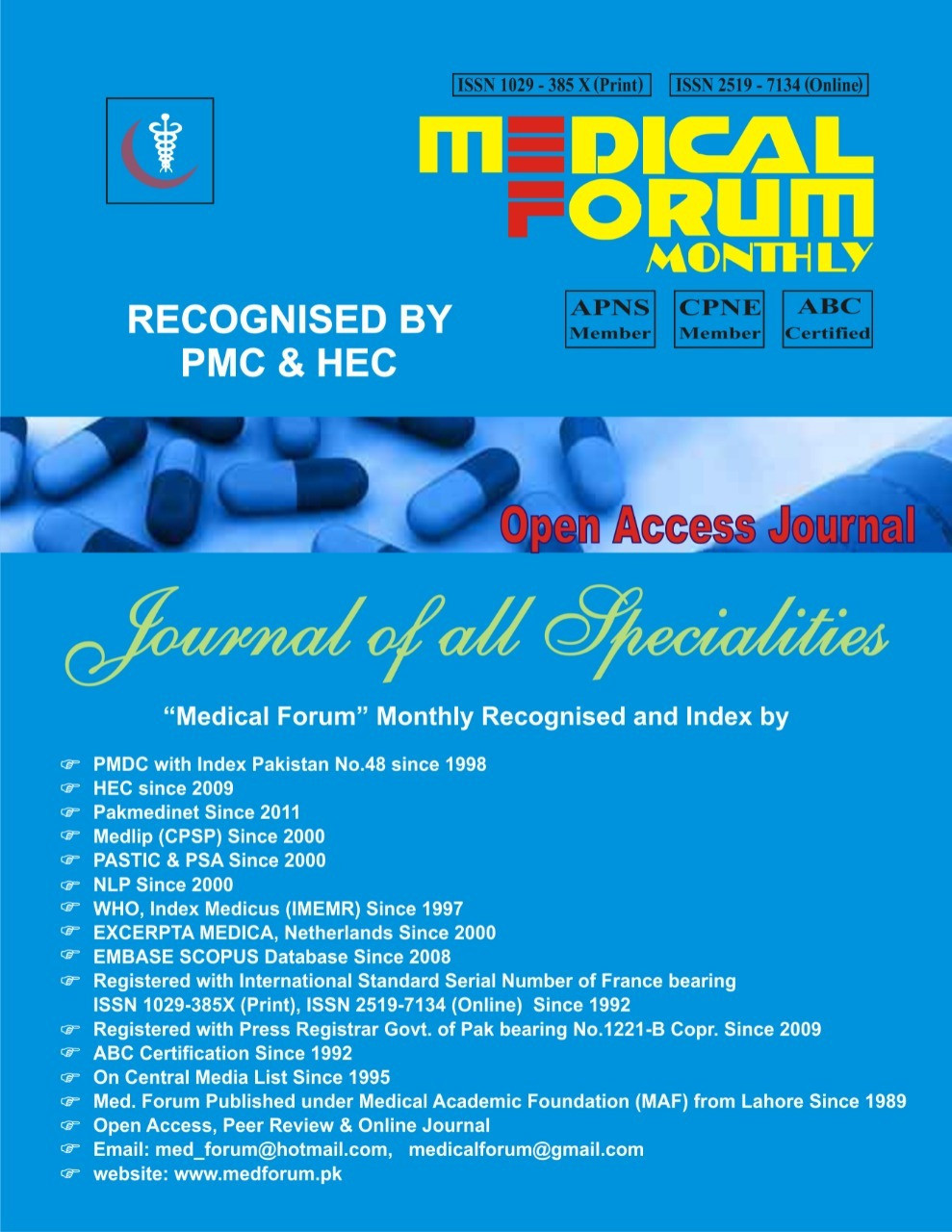
2. Prevalence of Peripheral Neuropathy in Pediatric Patients with Type 1 Diabetes Mellitus
Nazir Ahmed Malik1, Nimra Naheed Malik2, Somayia Sidiqa1, Somayia Javed3 and Tabassum Fatma4
ABSTRACT
Objective: The objective of this study was to study the prevalence of peripheral neuropathy in pediatric patients suffering from type 1 diabetes mellitus.
Study Design: A multicenter cross-sectional study.
Place and Duration of Study: This study was conducted at the HITEC-IMS Taxilla, Al -Ihsan Hospital Rawalpindi & Nusrat Hospital Rawalpindi from Jan 2023 to August 2023.
Methods: The study invited parents of paediatrics patients with type 1 diabetes to participate. Participating parents who consented were provided with questionnaires, encompassing neurological examinations and assessments of nerve dysfunction through nerve conduction studies (NCS). The questionnaire also gathered comprehensive information on demographics, family status, education level, chronic illnesses, weight, height, BMI, and access to the healthcare system. NCS procedures were meticulously explained to the participants and conducted using the standard "Alleger's Scorpio Electromyography machine" in a room maintained at an optimal temperature of 72 degrees Fahrenheit. Skin temperature, recorded at 97 degrees Fahrenheit, and ideal lighting conditions were ensured during the examination. The selected nerves for the procedure included median, ulnar, tibial, peroneal, and sural nerves. Reference values for NCS were obtained from a clinician specializing in neuromuscular disorders in infancy, childhood, and adolescence. With parental permission, blood samples were collected to measure blood glucose, HbA1c, Liver Function Tests (LFTs), vitamin B12, lipid profile, thyroid-stimulating hormone (TSH), urea, and creatinine in the children.
Results: The findings from this research indicate that prevalence of peripheral neuropathy in children with type 1 diabetes is 46%. There is a noteworthy association between glycemic control and the prevalence of peripheral neuropathy. The study's overall outcome reveals a 55.2% increase in nerve conduction per unit of HbA1C. The mean age of the study population is 12.8±3.665 years. Notably, the results of nerve conduction studies (NCS) are statistically significant. Furthermore, there are no significant differences observed between the groups concerning lipid profile, vitamin B12 levels, thyroid-stimulating hormone (TSH), urea, and creatinine.
Conclusion: The prevalence of diabetic neuropathy in children is 46%. Major risk factors in this condition are the duration of the disease and uncontrolled glucose level. The use of nerve conduction studies is more reliable than clinical evaluation for the diagnosis of neuropathy. Moreover, neuropathy has a direct relation with elevated levels of glucose. There is no evidence of retinopathy.
Key Words: diabetes, nerve conducting studies, juvenile diabetes, glucose level.
